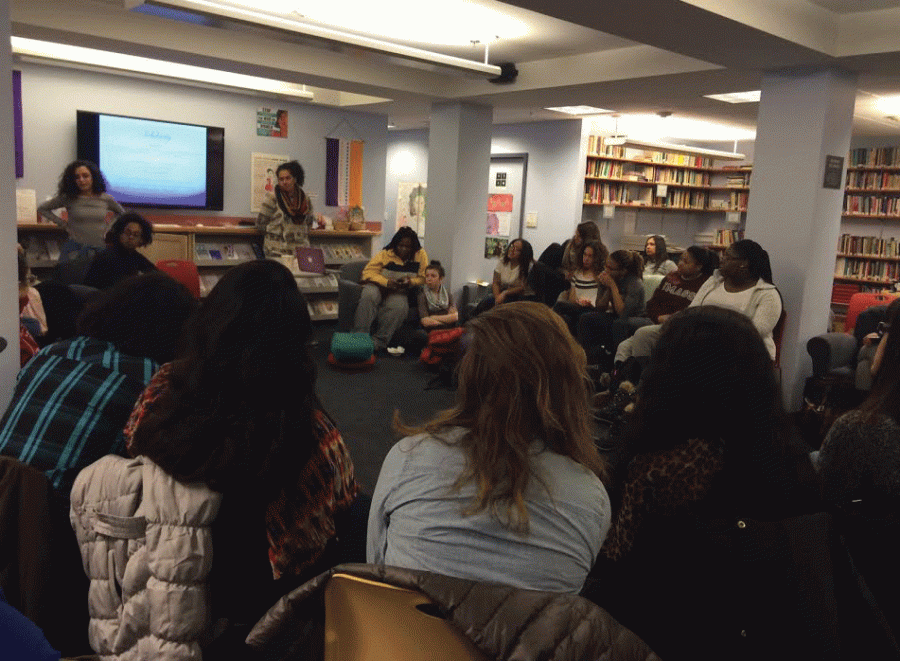“Solidarity Amongst Women of Color”: A SORT Open Discussion
On Wednesday, February 25, the women of Sisters of the Round Table (SORT) hosted an open meeting concerning “Solidarity Amongst Women of Color,” in the Women’s Studies Lounge. The meeting, which was largely an open group discussion, was the second event of Africana Women’s Week(s).
After creating a comfortable environment through a partner-based icebreaker, SORT Core member and senior Natasha Torres opened up discussion about the term “woman of color,” and what this identifier means. The crowd of approximately 40 people had a variety of opinions concerning the meaning of the term and what it meant to identify as a woman of color. Is it simply a catchall term? Why not be more specific? Doesn’t it further “other” those who are not visibly white? Is it just used to navigate white spaces? Is it a comparative identity, rather than a personal one? Personal opinions wavered across the board regarding the connotations of the term, but first-year student Anika Rutah had a more positive association.
“The term fills me with a lot of passion,” Rutah said. “Yes, we all have our own ethnicities and cultures, but to me, ‘women of color’ is unifying. It says, ‘These are my sisters.’”
In truth, the term “women of color” was born of an effort to bring a more inclusive attitude to the struggle for equality. According to Loretta Ross, longtime feminist activist, the term originated in 1977 when women of other marginalized identities wanted to become involved in the Black Women’s Agenda, but they were not black. Thus, they called themselves “women of color.” Women of color was not merely a term for the “other” category, as in not white. These women self-identified as women of color to celebrate what they had in common; the term unifies both their struggles and their efforts. Senior and SORT Core member Christelle Boursiquot took the unification of efforts to heart.
“I identify as a woman of color because I’m looking for change,” Boursiquot said. “It’s not about biology. It’s not just because I have more melanin in my skin.”
Conversation then turned to consider the active choice to identify as a woman of color and the commitment to collaborating with other races or ethnicities to work for a common goal. And it was this idea of a common goal that brought up the second disputed term of the hour – solidarity.
What does it mean to be a part of a collective? The group was largely dissatisfied with the dictionary definition of solidarity – “unity or agreement of feeling or action, especially among individuals with a common interest; mutual support within a group.” Many voiced that solidarity was a more dynamic concept than the definition allowed. Others protested that the common feeling was the most important aspect, while some individuals claimed that responsibility was the biggest ingredient.
The group seemed to agree on the importance of the popular Lilla Watson quote: “If you have come here to help me, you are wasting your time. But if you have come because your liberation is bound up with mine, then let us work together.”
But what does solidarity look like for a diverse group of women who identify as women of color? Can allies exist? Can there be disagreement? How is collective action agreed upon? Is there such a thing as sustainable solidarity – can we take care of each other and ourselves?
“I have to look at myself, and see how I am implicated in the bigger issues,” Boursiquot said of her role in the collective identity of women of color. “I have to reflect and become accountable for my actions…It’s easy to say it’s not about me; it’s harder to make a commitment.”
The individuals who were present at the SORT meeting Wednesday night may not have discovered the perfect model of solidarity, but they did discuss these issues with passion, eloquence and a sense of responsibility for the others in the room.







